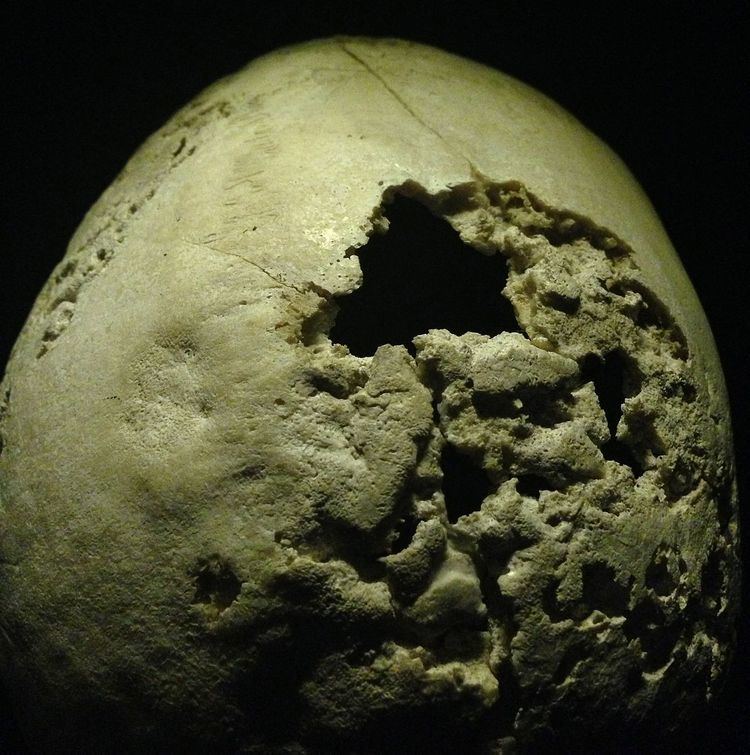 | ||
Neurosyphilis is an infection of the brain or spinal cord caused by the spirochete Treponema pallidum. It usually occurs in people who have had chronic, untreated syphilis, usually about 10 to 20 years after first infection and develops in about 25%–40% of persons who are not treated. The United States' Centers for Disease Control and Prevention (CDC) advises that neurosyphilis can occur at any stage of a syphilis infection.
Contents
Signs and symptoms
Neurosyphilis has four different forms: asymptomatic, meningovascular, tabes dorsalis, and general paresis. In rare instances, active neurosyphilis can mimic Alzheimer's disease.
Symptoms of neurosyphilis include, but are not limited to the following:
Upon further diagnostic workup, the following signs may be present:
Diagnosis
In addition to evaluation of any symptoms and signs, various blood tests can be done:
Also, it is important to test the cerebrospinal fluid for signs of syphilis.
Additional tests to look for problems with the nervous system may include the following:
Treatment
Penicillin is used to treat neurosyphilis, however, early diagnosis and treatment is critical. Two examples of penicillin therapies include:
Follow-up blood tests are generally performed at 3, 6, 12, 24, and 36 months to make sure the infection is gone. Lumbar punctures for CSF fluid analysis are generally performed every 6 months.
Neurosyphilis was almost at the point being unheard of in the United States after penicillin therapy was introduced. However, concurrent infection of T. pallidum with human immunodeficiency virus (HIV) has been found to affect the course of syphilis. Syphilis can lie dormant for 10 to 20 years before progressing to neurosyphilis, but HIV may accelerate the rate of the progress. Also, infection with HIV has been found to cause penicillin therapy to fail more often. Therefore, neurosyphilis has once again been prevalent in societies with high HIV rates and limited access to penicillin.
